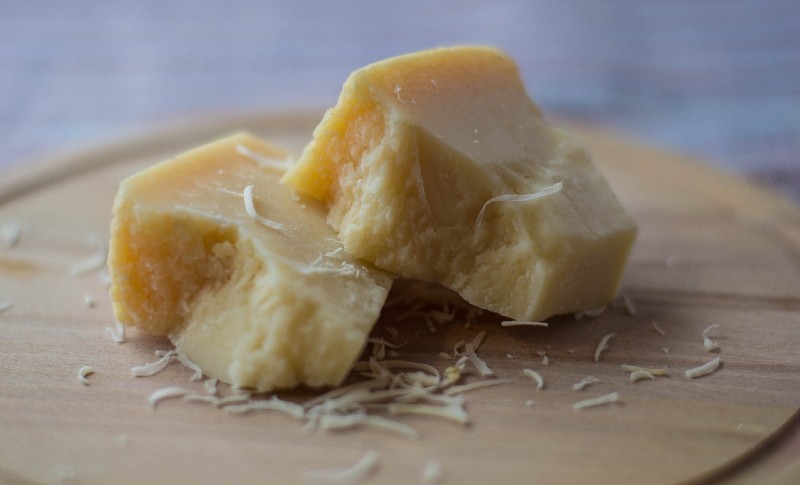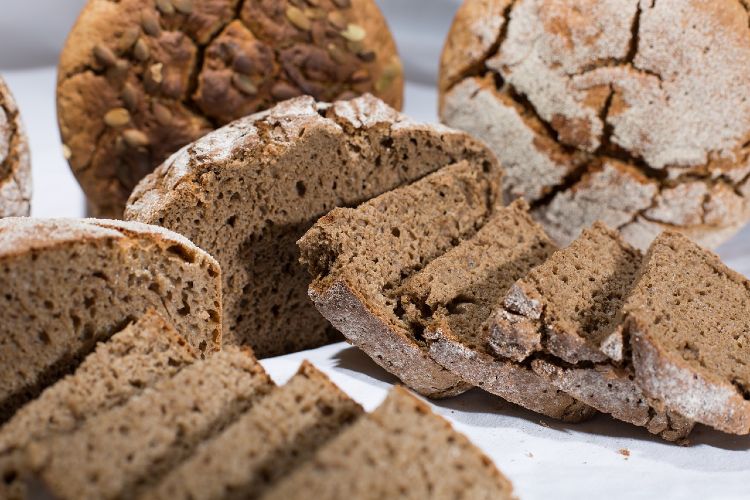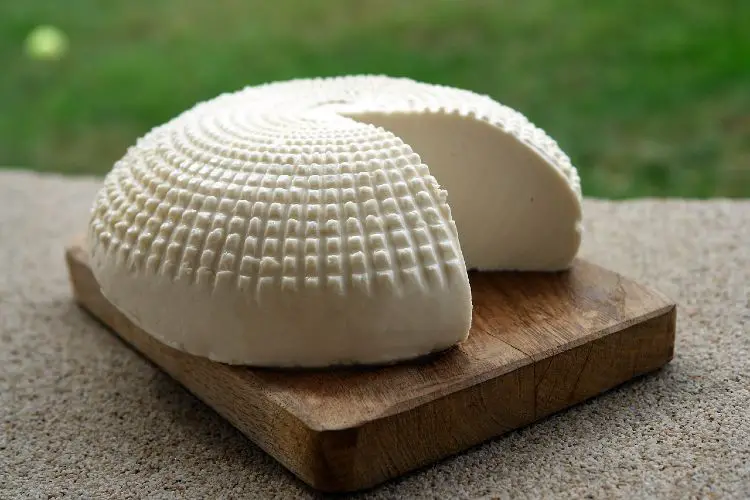A Twist on Tradition: Innovative Parmesan Cheese Substitutes for Modern Cooks
Parmesan cheese, known as Parmigiano-Reggiano in Italian, is a hard, granular cheese made from cow’s milk. Named after the producing areas of Parma and Reggio Emilia, it’s often aged for over a year to develop its rich, complex flavors.
Its sharp, nutty taste and crumbly texture make it one of the most beloved cheeses in the culinary world, especially in Italian cuisine.
In Italian cooking, Parmesan cheese is more than just an ingredient; it’s a culinary icon. Used both as a primary ingredient and as a finishing touch, it adds depth and flavor to a multitude of dishes.
From the simplicity of pasta topped with freshly grated Parmesan to more complex dishes like risotto and eggplant Parmesan, this cheese is a key player in Italian gastronomy. Its unique ability to enhance flavors has made it a staple in kitchens not just in Italy, but all around the world.
Need for Alternatives
Despite its popularity, there are various reasons why someone might seek a replacement for Parmesan cheese. Dietary restrictions, such as lactose intolerance or a vegan lifestyle, may necessitate an alternative.
Additionally, availability and cost can also be factors, particularly outside Italy where genuine Parmesan can be expensive or hard to find.
Fortunately, the versatility of Parmesan’s flavor profile means that there are several viable alternatives that can replicate its taste and texture, whether they are other dairy cheeses or plant-based alternatives.
Dairy Substitutes for Parmesan Cheese
Asiago Cheese
Origin and Taste: Hailing from the Veneto region of Italy, Asiago cheese offers a mild and nutty flavor, similar to Parmesan.
Aging Process: Aged Asiago cheese, especially if aged for around nine months, achieves the flaky texture and sharp flavor akin to Parmesan.
Usage: Ideal for topping pizzas and salads or in pesto and pasta sauces.
Romano Cheese
Origin and Taste: Made from cow’s milk, Romano cheese has a salty and strong flavor, making it a suitable substitute.
Texture: Harder than Asiago, it’s particularly loved by those who enjoy the texture of Parmesan.
Usage: Grated Romano can replace Parmesan in equal quantities in cooking.
Pecorino Romano
Origin and Taste: Made from sheep milk, Pecorino Romano’s salty and savory taste is akin to Parmesan.
Aging Process: Often aged up to a whole year, this cheese offers a hard and flaky texture.
Usage: Perfect for grating on dishes or adding to pesto, it can be a 1:1 replacement for Parmesan.
Grana Padano
Origin and Taste: Like Pecorino Romano, Grana Padano is a common substitute in Italian cooking, known for its creamy and nutty flavor.
Aging Process: Aged for at least nine months, it achieves a similar texture to Parmesan.
Usage: Used in the same quantity as Parmesan, especially in pesto.
Mozzarella (In Limited Cases)
Origin and Taste: While not typically a suitable replacement for Parmesan due to its soft texture, mozzarella’s mild and creamy flavor may be used in some cases, like as a topping.
Usage: Best avoided in sauces like Alfredo or pesto where Parmesan’s hard texture is essential.
Gouda (Aged)
Origin and Taste: Aged Gouda can present a complexity and sharpness close to Parmesan.
Texture: Its firm texture can offer a comparable consistency to Parmesan when well-aged.
Usage: Suitable for grating over dishes or incorporating into sauces.
Non-Dairy and Vegan Substitutes for Parmesan Cheese
The vegan community doesn’t need to miss out on the delicious, nutty flavor of Parmesan cheese. There are numerous alternatives that offer both the taste and texture reminiscent of traditional Parmesan. These can be found as commercial products or crafted in your home kitchen.
Nutritional Yeast
Taste: Nutritional yeast offers a savory, cheesy flavor that makes it a popular plant-based substitute.
Usage: Ideal in soups, pasta, and pizza or to enhance a vegan Alfredo sauce. Usually, only half as much nutritional yeast is needed compared to Parmesan.
Health Benefits: Rich in vitamins and minerals, this substitute also provides a health boost.
Vegan Cheese Brands
Availability: Several brands offer vegan Parmesan cheese made from a blend of soy, nutritional yeast, and other plant-based ingredients.
Usage: Used in the same way as regular Parmesan, these products can be found in both grated and block forms.
Brand Recommendations
Go Veggie’s Grated Parmesan Style Topping: Made from soy, it’s a popular choice that provides a tangy and savory flavor.
Follow Your Heart Dairy-Free Parmesan: Offers a grated alternative that is gluten-free and non-GMO.
Violife Just Like Parmesan Wedge: This block can be grated or sliced, allowing for flexibility in culinary applications.
These vegan alternatives attempt to replicate the crumbly texture and rich flavor of traditional Parmesan. While they may not offer the exact taste, they usually come close, often by utilizing nutritional yeast for the tangy, cheesy flavor.
Flavor: Tends to be nutty and salty, often enhanced with yeast or other fermented ingredients.
Texture: Many commercial vegan Parmesans strive for a grainy, crumbly texture that can be sprinkled over dishes.
Homemade Parmesan Cheese Substitutes
Cashew Parmesan
Ingredients: A blend of cashews, nutritional yeast, garlic powder, and salt.
Preparation: Simply blend all the ingredients to create a texture resembling grated Parmesan.
Usage: This homemade alternative can be used in a 1:1 ratio with traditional Parmesan in various dishes, including salads and pastas.
Almond Meal
Taste: Ground almonds can create a texture that somewhat mimics Parmesan, with a nutty flavor.
Usage: Often combined with nutritional yeast and other seasonings to create a vegan Parmesan alternative.
Avocado (For Creaminess)
Description: Though not a flavor substitute, mashed avocado can replace the creamy aspect of Parmesan in some recipes.
Usage: Suitable for pesto and other sauces where a creamy texture is desired, rather than a cheesy flavor.
Tofu (With Seasoning)
Preparation: Firm tofu can be crumbled and seasoned with nutritional yeast, garlic powder, and salt to create a Parmesan alternative.
Usage: This can be sprinkled over dishes like pizza and pasta, or used in sauces.
Flavor Comparison
Asiago Cheese: A mild and nutty flavor that closely resembles Parmesan. Slightly milder, so you might need to use more.
Romano Cheese: Strong and salty flavor that pairs well with Parmesan recipes.
Nutritional Yeast: Offers a cheesy, savory taste, ideal for dairy-free dishes but a distinct flavor profile.
Pecorino Romano: Salty, savory, and aged flavor; a common substitute in authentic Italian cuisine.
Grana Padano: Creamy and nutty, closely mimicking Parmesan.
Cashew-Based Vegan Parmesan: Rich and nutty but can vary greatly based on ingredients and preparation.
Texture Comparison
Asiago Cheese: Flaky and sharp, similar to Parmesan, varies with age.
Romano Cheese: Harder than Asiago, providing a Parmesan-like texture.
Nutritional Yeast: Powdery and can make dishes creamier but lacks the crumbliness of cheese.
Pecorino Romano: Hard and flaky, ideal for grating.
Grana Padano: Hard and flaky, resembling Parmesan.
Cashew-Based Vegan Parmesan: Grainy, can be made to desired consistency.
Price Comparison
Asiago Cheese: Generally less expensive than Parmesan, widely available.
Romano Cheese: Similar price to Parmesan, readily accessible.
Nutritional Yeast: Usually inexpensive and sold in bulk; a cost-effective option.
Pecorino Romano: Can be more expensive due to its authenticity.
Grana Padano: Often priced similarly to Parmesan.
Cashew-Based Vegan Parmesan: Price can vary based on ingredients but generally affordable to make at home.
Recommendations Based on Dietary Needs
For Dairy-Free & Vegan
Nutritional yeast, and cashew-based Parmesan are fantastic options. Their distinct flavors and easy-to-make recipes make them suitable for those avoiding dairy or animal products.
For Authentic Italian Cooking
Opting for Pecorino Romano or Grana Padano will give you a taste very close to traditional Parmesan, preserving the essence of Italian cuisine.
For Budget-Friendly Alternatives
Asiago and nutritional yeast offer a cheaper but still delicious substitute for Parmesan.
Conclusion
Using Parmesan cheese substitutes doesn’t mean sacrificing taste or quality. With the diversity of available options, it’s possible to find a replacement that fits your specific needs, whether you adhere to a particular diet, are on a budget, or simply wish to explore new flavors.
FAQs
Can I use cheddar instead of parmesan?
Yes, you can use cheddar instead of Parmesan in certain dishes, but there will be some differences in flavor and texture. Cheddar cheese has a stronger and sharper taste compared to Parmesan, which has a nuttier and more savory flavor. Cheddar is also creamier and melts better than Parmesan. So, while cheddar can work as a substitute, it may alter the overall taste and consistency of the dish.
Can I replace parmesan cheese with mozzarella?
Mozzarella is not an ideal replacement for Parmesan cheese in most dishes. Mozzarella is a mild and stretchy cheese that is commonly used in pizza and Italian-American dishes. It has a completely different flavor profile compared to Parmesan, and it doesn’t have the same sharpness and depth of taste. Moreover, mozzarella doesn’t grate well like Parmesan, so it won’t provide the same texture in dishes.






